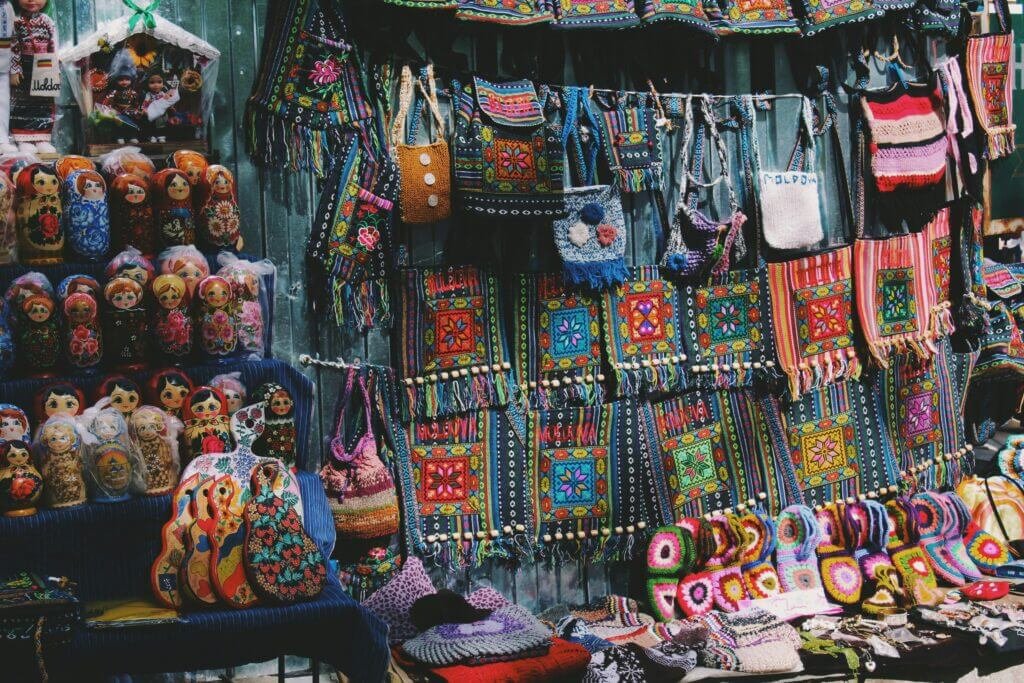If you’ve ever found yourself puzzled about the difference between artisan and handcrafted, fear not, you’re not alone. This article will brush away the cobwebs of confusion and enlighten you on the different nuances and subtleties that distinguish these two creative worlds. You’ll soon be able to determine whether a product is artisan or handcrafted with just a glance, enhancing your appreciation for the craftsmanship behind the exquisite items you behold. So, sit back, sip on your coffee, as we demystify the unexplored terrain of artisan versus handcrafted for you.

Understanding the Term Artisan
Define: What is Artisan?
An artisan is a skilled craftsperson who creates items by hand, often using traditional methods and techniques. These individuals typically specialize in a particular trade or craft, harnessing their expertise to produce high-quality, unique items. The term ‘artisan’ embodies more than just the ability to create something with one’s hands; it symbolizes the symbiosis of knowledge, skill, and love for the craft.
Roots and History of Artisan Craftsmanship
The roots of artisan craftsmanship can be traced back to the pre-industrialized times when craftsmen adroitly shaped our lives and cultures. Craftsmanship was once the primary means of production, with each artisan possessing individual skills honed through rigorous practice and experience. From ancient Egypt’s master pyramid builders to the medieval guilds of Europe, artisans have always been the foundation of societies. Their skills were passed down through generations, thus preserving the historical essence of cultures.
Examples of Artisan Products
Artisan products are as expansive and diverse as the crafts themselves. They encompass all types of goods, including furniture, pottery, leather goods, jewelry, and food items like cheese, bread, and craft beer. Each artisan product is a testament to the years of dedication and the personal connection the craftsperson has with their craft.
Understanding the Term Handcrafted
Define: What is Handcrafted?
Handcrafted is a broad term denoting items made by hand or with the help of tools. It includes everything that someone has intentionally shaped, constructed, or finished by hand, often resonating with the personal touch of the creator. Conversely, it’s less about the tradition and more about the physical involvement of the craftsperson in the creation process.
Origins and Evolution of Handcrafted Products
The origins of handcrafted products go hand-in-hand with human civilization. Prehistoric humans crafted tools, clothing, and shelters by hand, marking the birth of handcrafted creations. Over time, the demand for handmade goods grew, charting the path for the evolution and diversification of handcrafted products. Today, handcrafted goods are cherished for their uniqueness and the personal touches of the creators.
Examples of Handcrafted Products
Handcrafted products range widely, from clothing and accessories to furniture and home decor, from handmade soaps to scrumptious pastries. Each handcrafted product, regardless of its simplicity or complexity, carries with it the heart and soul of the creator, making it unique and exclusive.

Fundamental Differences between Artisan and Handcrafted
Contrasting Definitions
While both terms denote manual craftsmanship, they differ in connotation. Artisan typically means a master of a trade, crafting with traditional methods, while handcrafted is a broader term relating to anything made by hand or using tools, irrespective of tradition.
Differences in Manufacturing Process
Artisan and handcrafted also differ in their manufacturing processes. Artisan products often require traditional techniques and methods, aligning with historical customs, while handcrafted goods might not necessarily follow any established tradition but rather depend on the creator’s design, vision, and handiwork.
Comparing Quality and Authenticity
Quality and authenticity are also distinguishing factors. Artisan goods are admired for their excellent quality rooted in rigorous traditional practices, while handcrafted items are cherished for their authenticity and human touch.
The Process behind Artisan Creation
Use of Traditional Methods
Artisans adhere strictly to the traditional methods intrinsic to their craft, ensuring that each product holds historical value. This entails the use of age-old techniques passed down through generations, infusing each creation with an essence of the past.
Importance of Skill and Expertise
Artisan creation heavily relies on the skill and expertise of the craftsperson. Years of practice and dedication make these individuals masters of their trade. They possess a deep understanding of their craft beyond surface-level knowledge, rendering their work distinctive and exceptional.
Requirement of Specialized Knowledge
The creation of artisan products requires specialized knowledge. This specialized knowledge is often specific to the particular craft or trade, enabling the artisan to produce high-quality, authentic products with outstanding precision.

The Process behind Handcrafted Creation
Role of Human Involvement
Human involvement plays a critical role in handcrafted creation. The process primarily involves designing and shaping the product by hand or with the assistance of tools, ensuring each piece is distinct and carries a piece of the creator’s soul.
Dependence on Tools and Techniques
While traditional methods may not be strictly followed, handcrafted creation does rely on tools and techniques. Depending on the creator’s vision, each handcrafted product emerges through craft-specific tools and techniques, contributing to its individuality and uniqueness.
Variabilities and Uniqueness in Each Piece
Due to the handcrafted nature of these products, each piece bears its own variances and is unique. Even among identical designs, slight differences exist, adding to the charm and appeal of handcrafted goods.
Consumer Perception: Artisan vs Handcrafted
Popularity and Demand
The demand for both artisan and handcrafted products has been on the rise, with consumers increasingly seeking unique, high-quality goods linked to craftsmanship. Though the popularity of both kinds of products varies based on individual preferences.
Perceived Value and Pricing
Due to the painstaking process and skill involved, artisan products often carry a higher price tag, which consumers are willing to pay for the promise of quality and historic authenticity. In comparison, handcrafted items may be priced lower, though prices can vary based on the complexity of the craft and novelty of the design.
Impact of Marketing Terms
The terms ‘artisan’ and ‘handcrafted’ have gained significant traction in marketing strategies, often resulting in increased perceived value. These labels are equated with quality and exclusivity, influencing consumer behavior positively.

Role and Importance in the Society
Artisan: Preserving Tradition and Heritage
Artisans play a vital role in preserving tradition and heritage. Their work, deeply embedded in traditional methods, essentially serves as a cultural bridge to the past. By sticking to age-old practices, artisans help in conserving our historical and cultural identity.
Handcrafted: Encouraging Creativity and Expression
Handcrafted goods, on the other hand, encourage creativity and personal expression. Makers have the freedom to innovate and experiment, and in the process, they contribute to the creation of new designs and products, enhancing the diversity and richness of craftsmanship.
Regulation and Labeling
Regulations and Standards for Artisan Products
Regulations and standards exist for defining what can be labeled as ‘artisan’. These generally require the products to be made in traditional manners, by skillful hands, often in small quantities. However, laws and regulations can vary greatly by country and product type.
Regulations and Standards for Handcrafted Products
The term ‘handcrafted’ is regulated in some industries, while loose in others. Regulations typically focus on the product being manually created, but the degree of human involvement can vary. In certain instances, the use of machines or tools does not negate a product’s ‘handcrafted’ label.
Misuse and Misinterpretation of Terms
Despite regulations, misuse and misinterpretation of the terms ‘artisan’ and ‘handcrafted’ are common. Sometimes, mass-produced items are misleadingly labeled as ‘handcrafted’ or ‘artisan’, which dilutes the authentic meaning of these terms, posing challenges for those seeking genuine products.

Pros and Cons of Artisan Products
High Quality and Unique Designs
Artisan products are highly valued for their superior quality and unique design resulting from specialized skill and tradition. They offer a distinct appeal to those who value history, skill, and authenticity.
Time-Consuming and Expensive
The downside to artisan products is that they are time-consuming to make due to the traditional methods involved. This often makes them more expensive than mass-produced goods, potentially limiting their consumer base to those who can afford and appreciate their worth.
Limited Quantity and Availability
Given the intensive, manual process of creating artisan goods, these products are often available in limited quantities and may be difficult to find, depending on the rarity of the craft.
Pros and Cons of Handcrafted Products
Flexibility and Innovation
Handcrafted products allow for flexibility and innovation. The makers have the liberty to play with designs, methods, and tools, resulting in a vast variety of unique goods that can cater to diverse tastes.
Quality and Durability
Handcrafted products tend to be sturdier and durable, given the direct involvement of the maker. Each product is built with care and attention, ensuring high-quality output.
Higher Costs Compared to Mass Production
Despite these advantages, handcrafted products can sometimes cost more than mass-produced equivalents. This is due to the effort and time invested in creating each piece manually, and the unique materials often utilised in handcrafted designs.
In conclusion, both artisan and handcrafted products reflect the beauty of human creativity and skills. Understanding these terms helps appreciate the work behind each product and enables more informed decisions when purchasing such goods. From protecting traditions to fostering innovation, these forms of craftsmanship significantly contribute to our culture and societies.



